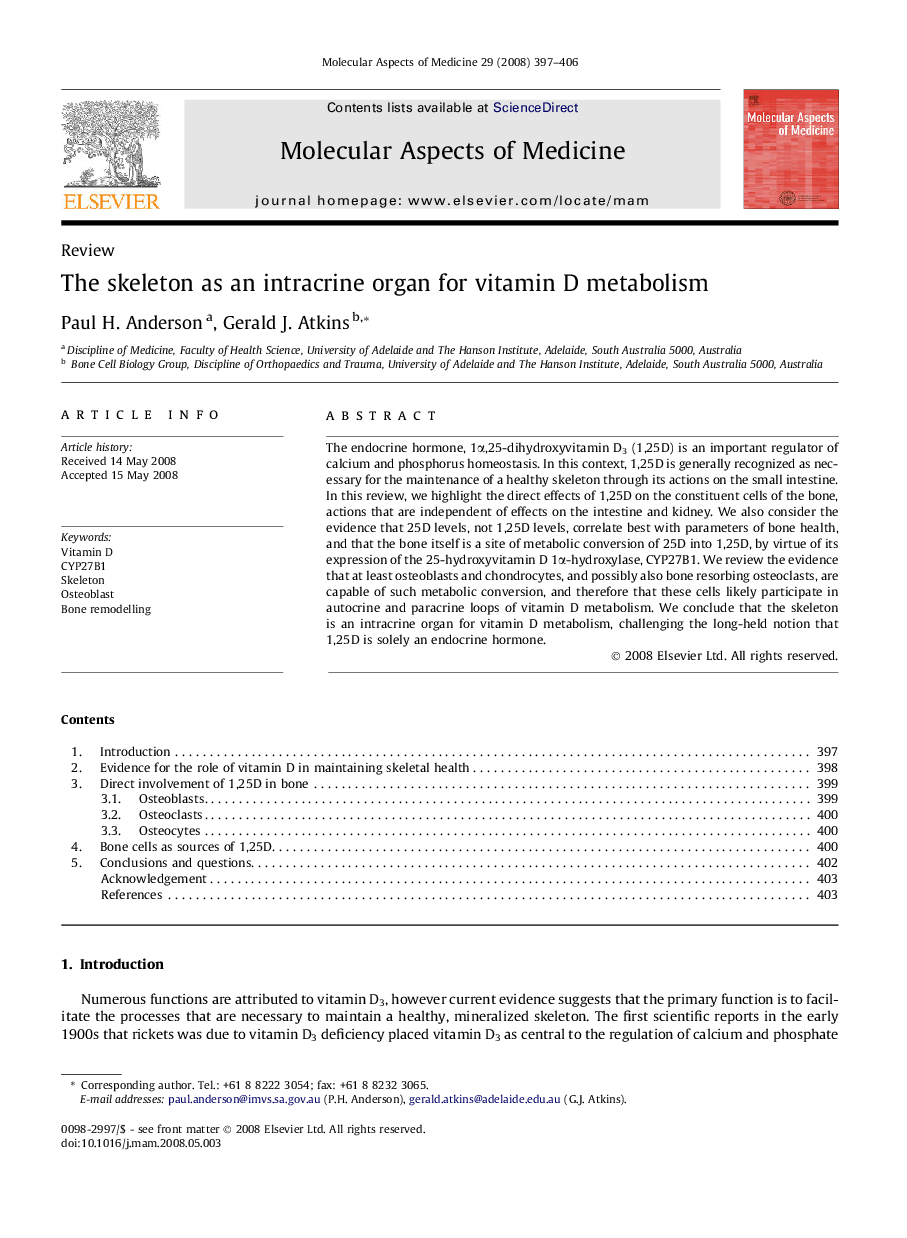| Article ID | Journal | Published Year | Pages | File Type |
|---|---|---|---|---|
| 1995947 | Molecular Aspects of Medicine | 2008 | 10 Pages |
The endocrine hormone, 1α,25-dihydroxyvitamin D3 (1,25D) is an important regulator of calcium and phosphorus homeostasis. In this context, 1,25D is generally recognized as necessary for the maintenance of a healthy skeleton through its actions on the small intestine. In this review, we highlight the direct effects of 1,25D on the constituent cells of the bone, actions that are independent of effects on the intestine and kidney. We also consider the evidence that 25D levels, not 1,25D levels, correlate best with parameters of bone health, and that the bone itself is a site of metabolic conversion of 25D into 1,25D, by virtue of its expression of the 25-hydroxyvitamin D 1α-hydroxylase, CYP27B1. We review the evidence that at least osteoblasts and chondrocytes, and possibly also bone resorbing osteoclasts, are capable of such metabolic conversion, and therefore that these cells likely participate in autocrine and paracrine loops of vitamin D metabolism. We conclude that the skeleton is an intracrine organ for vitamin D metabolism, challenging the long-held notion that 1,25D is solely an endocrine hormone.
